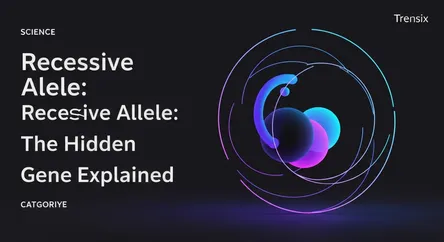Science
Recessive Allele: The Hidden Gene Explained

A simple explanation of recessive alleles, the genetic instructions that only appear if inherited from both parents, influencing traits and diseases.
What is it?
A recessive allele is a version of a gene that does not produce a specific trait if a dominant allele is present. In genetics, you inherit two alleles, or versions of each gene, from your parents. A recessive allele's effect is only seen when an individual inherits two copies of it, one from each parent. This genetic state is known as being homozygous for the recessive allele. If a dominant allele is paired with a recessive one, the dominant trait will be expressed, and the recessive allele is essentially hidden. Common examples of recessive traits include blue eyes and Type O blood.
Why is it trending?
The concept of recessive alleles is gaining attention as personal genetic testing becomes more widespread. Services that map a person's DNA can reveal if they are a "carrier" for certain genetic conditions. A carrier has one recessive allele for a disorder but doesn't have the condition themselves because they also have a dominant, functioning allele. This knowledge is crucial for family planning, as two carriers have a 25% chance of having a child who inherits both recessive alleles and is affected by the genetic disorder.
How does it affect people?
Recessive alleles impact people by determining various physical traits and being responsible for many inherited diseases. Traits like straight hair, attached earlobes, and the inability to roll your tongue are governed by recessive alleles. More significantly, many genetic disorders are passed down through recessive inheritance. These include conditions like cystic fibrosis, sickle cell anemia, and Tay-Sachs disease. For a person to have one of these diseases, they must inherit the specific recessive allele from both parents. Understanding recessive alleles helps in predicting the likelihood of these traits and diseases appearing in future generations.